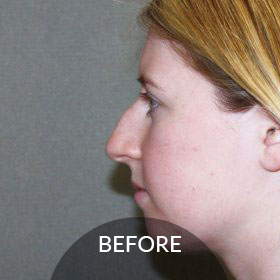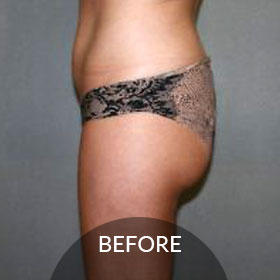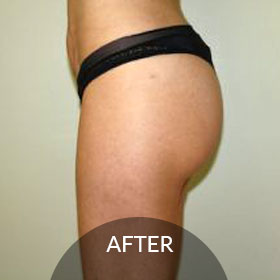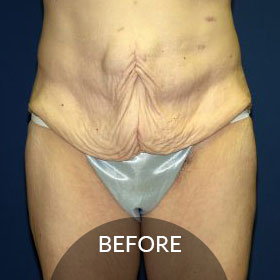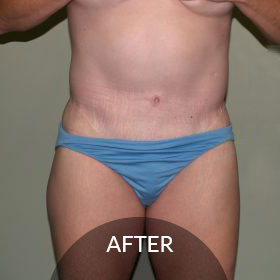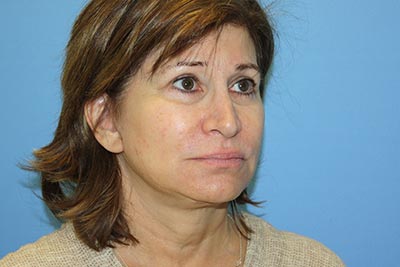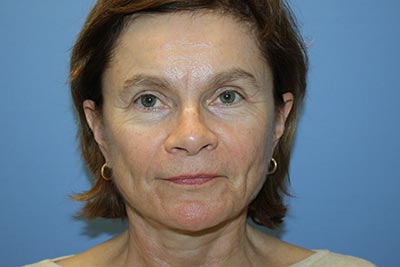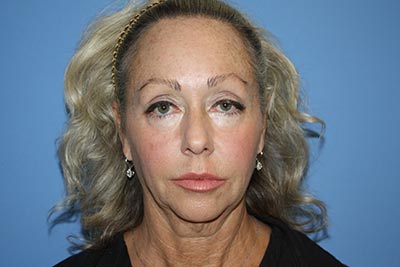As we age, our skin tends to lose its natural elasticity and firmness, often resulting in sagging skin, especially in areas such as the face, neck, arms, and thighs. While aging is the primary culprit behind sagging skin, other factors can also contribute. Dr. Gregory Fedele offers several excellent treatment options to address sagging skin and achieve a youthful appearance. However, understanding the root cause of sagging skin is also crucial. In this blog post, we’ll delve deeper into why skin sags and explore treatment options while also sharing tips on preventing premature skin laxity.
In the Cleveland, OH area? Interested in learning more about treatments for sagging skin? Call (216) 464-1616, and we will be happy to set you up with a consultation appointment with Dr. Fedele. Patients can also fill out this form to reach us; we will be in touch shortly.
Enjoying our blog? Check back often for more information from board-certified plastic surgeon Dr. Fedele!
Before and After Photos
What Causes Sagging Skin?
As we age, our skin undergoes many changes that can lead to visible signs of aging, such as wrinkles, fine lines, and sagging skin. These changes are the result of a combination of genetic and environmental factors, including exposure to UV radiation, pollution, and lifestyle choices like smoking and poor nutrition.
Decrease in Collagen Production
One of the most significant changes that occur in the skin as we age is a decrease in the production of collagen, a protein that gives our skin its strength, elasticity, and resilience. Collagen is produced by fibroblasts, specialized cells in the dermis layer of the skin, and it provides the foundation for the skin’s structure. [1]
Over time, the number of fibroblasts decreases, and those that remain produce less collagen. As a result, the skin becomes thinner, less elastic, and more prone to wrinkles and sagging. According to medical journals, collagen production declines by about 1% per year after the age of 20. [2]
Reduced Hydration
Another change that occurs in the skin as we age is a decrease in hydration. The skin’s natural moisturizing factors (NMFs) are substances that help to keep the skin hydrated by binding to water molecules. As we get older, the skin produces less NMFs, which can lead to dryness, flakiness, and itching.
Additionally, the epidermis, the outermost layer of the skin, thins out, which can make it more difficult for the skin to retain moisture. Not so fun fact: the epidermis thins by about 6.4% per decade after the age of 30! [3]
Formation of Age Spots
Age spots, also known as liver spots, are flat, brown spots that appear on the skin as we age. They are caused by an accumulation of melanin, the pigment that gives our skin its color, in certain areas of the skin. Age spots are most commonly found on the face, hands, and arms and are more common in people over the age of 50.
Decrease in Elasticity
Elasticity is another important characteristic of healthy skin, as it allows the skin to stretch and contract without becoming damaged. Like collagen, elastin is a protein that gives our skin its elasticity, and it is also produced by fibroblasts in the dermis layer of the skin.
Increased Inflammation
Inflammation is a natural immune response that helps the body to heal and protect itself from harmful invaders. However, chronic inflammation can be damaging to the skin and can lead to visible signs of aging, such as redness, blotchiness, and fine lines. Chronic inflammation in the skin can be caused by a variety of factors, including UV exposure, pollution, and poor nutrition.
Preventing Sagging Skin
While some factors that contribute to sagging skin are out of our control, there are things we can do to prevent it from happening or delay the process. These tips, provided by Dr. Fedele for his patients who undergo treatment for sagging skin, can also help maintain those results long-term. If you’re considering treatment for sagging skin, take note!
- Protect Your Skin from the Sun – Wear protective clothing, such as long-sleeved shirts and wide-brimmed hats, and use sunscreen with an SPF of 30 or higher.
- Stay Hydrated – Drink plenty of water and avoid dehydrating beverages like alcohol and caffeine. Aim to drink at least 8 glasses of water per day, and more if you’re exercising or spending time in a hot, dry environment.
- Eat a Healthy Diet – Include plenty of fruits and vegetables in your diet, as well as lean proteins and healthy fats.
- Exercise Regularly – Exercise helps to maintain a healthy weight and can improve the overall tone and appearance of your skin.
- Avoid Smoking – If you smoke, quit. Smoking can cause a host of health problems, including damage to the skin’s collagen and elastin.
- Maintain a Healthy Weight – Losing weight too quickly can cause sagging skin. If you need to lose weight, do it gradually and in a healthy manner.
What Body Areas Are Affected Most by Sagging Skin?
Sagging skin is a common concern for men and women, as it can affect their appearance and self-confidence. There are several areas of the body that are prone to sagging skin, including:
Face and Neck
As we age, the skin on our face and neck loses elasticity and collagen, which can cause sagging and wrinkles. This can result in a tired or aged appearance. The skin on the face is much thinner than the skin on other parts of the body because the skin on the face does not have a thick layer of fat underneath it like the skin on the thighs or buttocks. As a result, the skin on the face is more susceptible to damage and tends to show signs of aging more quickly.
The skin on the face is constantly exposed to environmental stressors such as sunlight, pollution, and harsh weather conditions. These factors can cause damage to the skin, leading to wrinkles, age spots, and other signs of aging.
Arms
The skin on the arms can sag due to weight loss or aging. This can be especially noticeable in the upper arms, where the skin can become loose and flabby.
Breasts
Sagging skin can also affect the breasts, especially after pregnancy, breastfeeding, or weight loss. This can cause the breasts to lose volume and sag.
Abdomen
Sagging skin in the abdomen can cause a protruding belly or “apron” of skin that hangs over the waistline.
Thighs
The skin on the thighs can become loose and saggy due to aging or weight loss. This can cause the thighs to look dimpled or “flabby.”
Treatment Options for Sagging Skin
Dr. Fedele offers several procedures to address sagging skin. These procedures include:
Facelift
A facelift is a surgical procedure that can address sagging skin and wrinkles on the face and neck. The procedure involves lifting and tightening the underlying muscles and tissues, as well as removing excess skin.
Brow Lift/Forehead Lift
A brow lift, also called a forehead lift can restore a more youthful and refreshed appearance to the forehead and brow area.
Eyelid Surgery
Eyelid lift, also known as blepharoplasty, can address sagging skin and wrinkles around the eyes. The procedure involves removing excess skin and fat from the upper and/or lower eyelids.
Arm Lift
An arm lift or brachioplasty can get rid of the dreaded “bingo wings” many women fear will form as they get older. Patients with genetically heavier arms that will lead to sagging can undergo liposuction, or a combination of lipo and lift, to create toned arms.
Thigh Lift
Similarly, the thigh lift can address loose skin between the inner thighs, that might cause uncomfortable chafing or make movement difficult.
Tummy Tuck
A tummy tuck, also known as abdominoplasty, can create the sleek, sexy midsection you dream of.
Non-Surgical Skin Tightening
Dr. Fedele offers a variety of non-surgical treatments to address sagging skin. These treatments can help improve lax skin without the need for surgery, and they are often less invasive and have a shorter recovery time.
What are the Best Fillers for Sagging Skin?
Soft tissue fillers are injected into the skin to add volume and improve the appearance of wrinkles and sagging. There are several types of fillers available, each with its own unique properties and benefits. Some fillers are made from hyaluronic acid, a substance naturally found in the body that helps hydrate and plump the skin. Other fillers are made from synthetic materials that can provide longer-lasting results.
Dr. Fedele offers a variety of soft tissue fillers, including
- Juvederm
- Restylane
- Sculptra
Juvederm and Restylane are hyaluronic acid fillers that can be used to add volume to the cheeks, lips, and other areas of the face. Sculptra is a synthetic filler that can help stimulate collagen production, improving the overall texture and tone of the skin.
Dr. Fedele also offers skin tightening treatments such as CO2 Laser Resurfacing and Collagen Induction Therapy (Micro-Needling). These treatments use different methods to stimulate collagen production. Whether you are looking for a quick and easy solution like fillers or a more comprehensive treatment like micro-needling, Dr. Fedele can help you find the right treatment to achieve your goals.
What is the Cost of Treating Sagging Skin in Cleveland, OH?
During a personal consultation, Dr. Fedele will evaluate your individual needs and recommend the most appropriate treatment plan based on your unique situation. The cost of non-surgical treatments for sagging skin can vary depending on factors such as the type of procedure and the extent of the treatment. Dr. Fedele will provide you with a detailed quote for the procedure, as well as any associated costs such as anesthesia and facility fees, during your consultation.
Dr. Fedele is a board-certified plastic surgeon with years of experience in treating patients with sagging skin. With his expertise and attention to detail, you can feel confident that you will receive the highest quality care and achieve the best possible results. Call (216) 464-1616 for your appointment today!
References
- Sherman VR, Yang W, Meyers MA. The materials science of collagen. Journal of the Mechanical Behavior of Biomedical Materials. 2015;52:22-50. https://doi.org/10.1016/j.jmbbm.2015.05.023
- Reilly DM, Lozano J. Skin collagen through the lifestages: importance for skin health and beauty. Plastic and Aesthetic Research. 2021;8(2). https://doi.org/10.20517/2347-9264.2020.153
- Waller JM, Maibach HI. Age and skin structure and function, a quantitative approach (I): blood flow, pH, thickness, and ultrasound echogenicity. Skin research and technology : official journal of International Society for Bioengineering and the Skin (ISBS) [and] International Society for Digital Imaging of Skin (ISDIS) [and] International Society for Skin Imaging (ISSI). 2005;11(4):221-235. https://doi.org/10.1111/j.0909-725X.2005.00151.x




